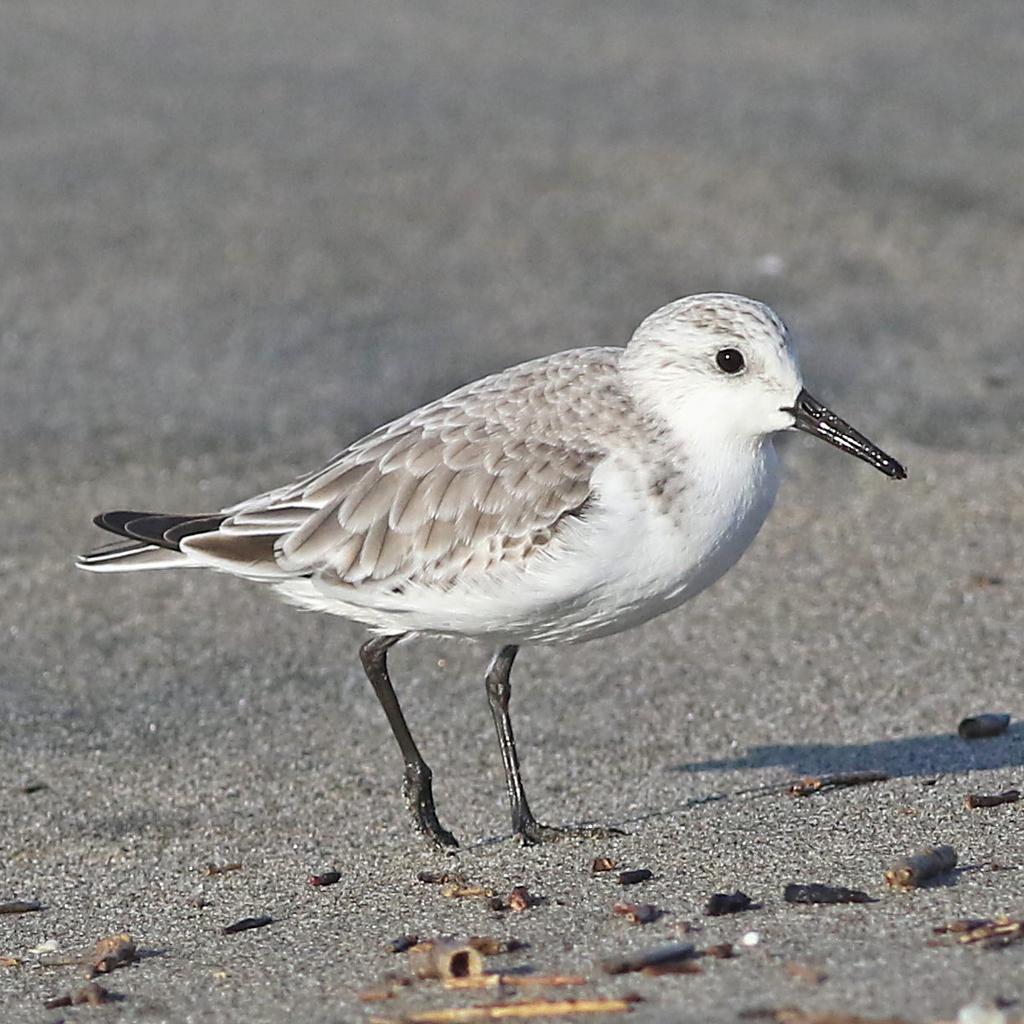You're most likely to spot small flocks of Sanderlings (7-8 in) in their pale winter plumage - light gray above and white below with black legs and beak - chasing the waves and probing the sand for crabs and other small crustaceans on the beaches of the Atlantic, Pacific, and Gulf coasts.
In summer, Sanderlings breed on islands above the Arctic Circle on dry rocky tundra close to lakes or ponds.
Could it be? Dunlins are larger than Sanderlings with a longer, downcurved bill. Piping Plovers are smaller, stay higher up on the beach, and don't chase waves. Western Sandpipers are smaller and browner than Sanderlings.
Did you know? After eating, Sanderlings will often regurgitate pellets of sand and mollusk and crustacean shells.
See Also: Black Oystercatcher, Black Turnstone, Dunlin, Piping Plover, Spotted Sandpiper






